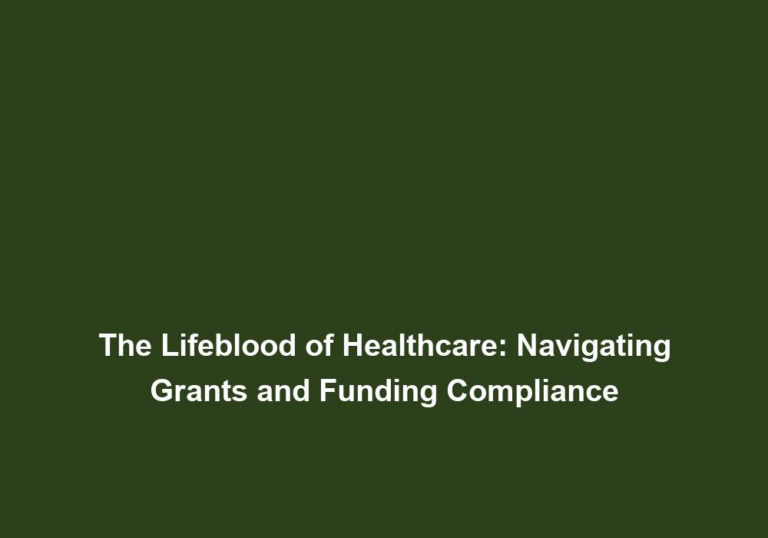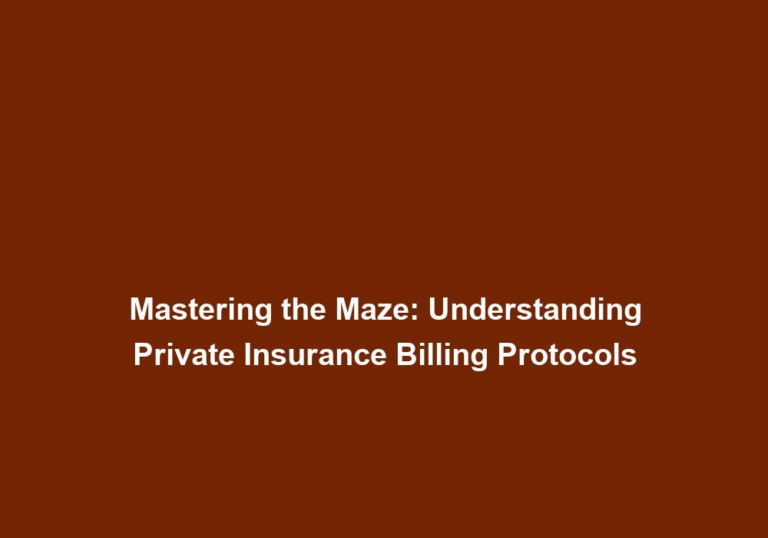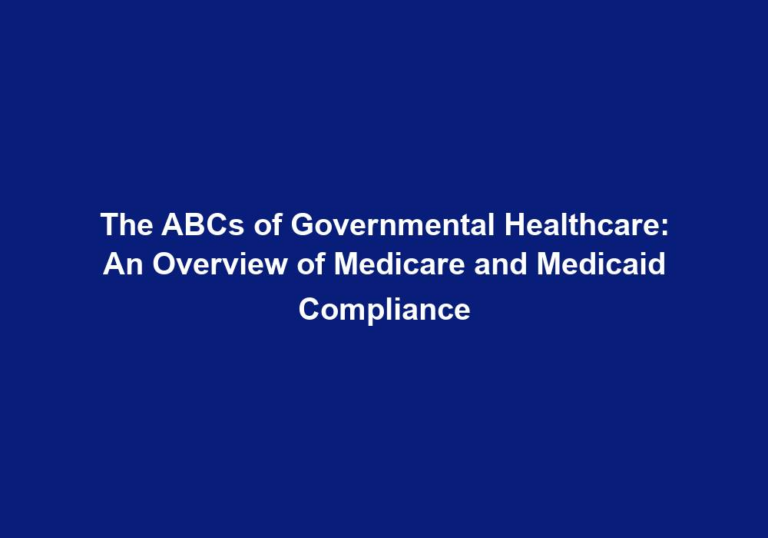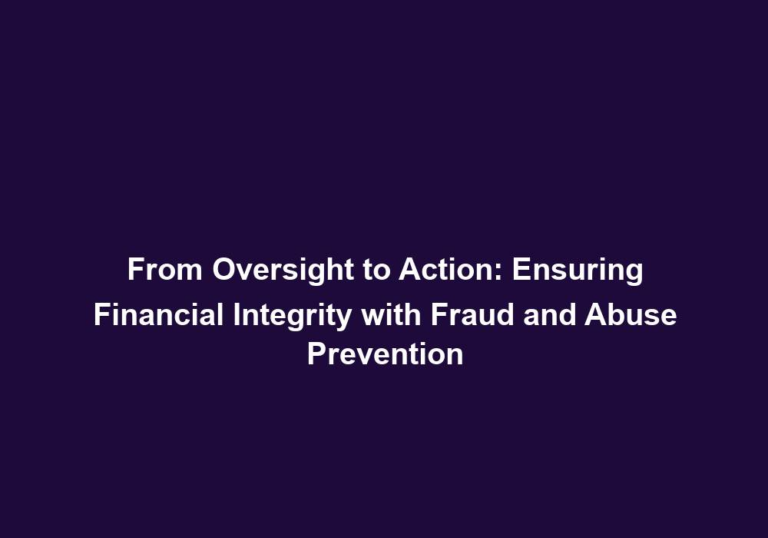Following the Money: Best Practices in Billing and Reimbursement
In the complex world of healthcare, effective billing and reimbursement practices are vital for the financial stability and success of healthcare providers. Efficiently managing the process of billing and reimbursement not only ensures a steady cash flow but also maintains compliance with regulatory requirements and enhances patient satisfaction. This article will delve into the best practices that healthcare providers can follow to optimize their billing and reimbursement processes.
1. Implementing an Effective Revenue Cycle Management System
A robust revenue cycle management (RCM) system is the foundation of efficient billing and reimbursement. It involves managing the entire patient journey, from appointment scheduling to claim submission and payment collection. By streamlining and automating this process, healthcare providers can minimize errors, reduce administrative burdens, and accelerate payment cycles.
Key components of an effective RCM system include:
a) Accurate Patient Registration
Thorough and accurate patient registration is essential for successful billing and reimbursement. Collecting complete patient information, including insurance details and demographic data, ensures correct claims submission and reduces the risk of claim denials or rejections.
- Collecting accurate patient information, such as insurance details and demographic data, is crucial for correct claims submission.
- Thorough patient registration helps minimize the risk of claim denials or rejections.
b) Verification of Insurance Coverage
Before providing any services, it is crucial to verify a patient’s insurance coverage. This step helps to identify any limitations or exclusions in their plan and enables providers to estimate patient responsibility accurately. By notifying patients in advance of their financial responsibilities, providers can minimize surprises and improve patient satisfaction.
- Verifying a patient’s insurance coverage before providing services helps identify any limitations or exclusions in their plan.
- Accurate estimation of patient responsibility through insurance verification improves patient satisfaction and helps minimize financial surprises.
c) Timely and Accurate Documentation
Accurate and comprehensive documentation of patient encounters is critical for successful billing and reimbursement. Providers must ensure that all services rendered are thoroughly documented, including diagnoses, procedures, and treatments. Proper coding and documentation minimize the risk of claim denials and support accurate reimbursement.
- Comprehensive documentation of patient encounters, including diagnoses, procedures, and treatments, is essential for accurate billing and reimbursement.
- Proper coding and documentation reduce the risk of claim denials and support accurate reimbursement.
d) Efficient Claims Submission
Submitting claims in a timely and accurate manner is essential to prevent unnecessary delays in reimbursement. RCM systems should enable electronic claims submission, which significantly reduces processing time and minimizes the risk of errors. Regular monitoring and tracking of claims allow providers to identify and resolve any issues promptly.
- Timely and accurate claims submission prevents unnecessary delays in reimbursement.
- Electronic claims submission through RCM systems reduces processing time and minimizes the risk of errors.
e) Proactive Denial Management
Claim denials are a common occurrence in healthcare billing. Implementing a proactive denial management system enables providers to identify the root causes of denials and take necessary actions to prevent future occurrences. Analyzing denial patterns and implementing corrective measures reduces revenue leakage and improves overall reimbursement rates.
- Proactive denial management helps identify the root causes of claim denials and prevents future occurrences.
- Analyzing denial patterns and implementing corrective measures reduces revenue leakage and improves reimbursement rates.
f) Streamlined Payment Collection
Efficient payment collection processes are essential to maintain a healthy cash flow. Providers should offer flexible payment options to patients, such as online payment portals or payment plans. Emphasizing prompt payment policies and providing clear explanations of patient financial responsibilities can help reduce outstanding balances and improve collection rates.
- Offering flexible payment options, such as online payment portals or payment plans, improves payment collection processes.
- Emphasizing prompt payment policies and explaining patient financial responsibilities clearly reduces outstanding balances and improves collection rates.
2. Staying Up-to-Date with Regulatory Changes
The healthcare industry is subject to frequent regulatory changes that impact billing and reimbursement practices. Staying informed and compliant with these changes is crucial for providers to avoid penalties, claim denials, and potential legal issues. Some best practices include:
a) Regular Training and Education
Healthcare providers should invest in regular training and education for their billing and coding staff to ensure they stay up-to-date with the latest coding guidelines, regulatory changes, and compliance requirements. This helps prevent errors and reduces the risk of audit findings.
- Regular training and education for billing and coding staff ensure they stay up-to-date with coding guidelines and regulatory changes.
- Investing in training and education reduces the risk of errors and audit findings.
b) Engage Compliance Experts
Engaging compliance experts or consultants can provide valuable insights into regulatory changes and help healthcare providers navigate complex compliance challenges. These experts can assist in conducting regular audits, reviewing policies and procedures, and ensuring adherence to all relevant laws and regulations.
- Compliance experts or consultants offer valuable insights into regulatory changes and assist in conducting regular audits.
- Engaging compliance experts helps healthcare providers navigate complex compliance challenges and ensures adherence to relevant laws and regulations.
3. Enhancing Patient Communication and Engagement
Effective patient communication plays a crucial role in optimizing billing and reimbursement processes. By enhancing transparency and engaging patients in their financial responsibilities, providers can mitigate payment delays and improve overall patient satisfaction. Some strategies to consider include:
a) Clear and Transparent Pricing Information
Providing patients with clear and transparent pricing information before services are rendered allows them to make informed decisions regarding their healthcare. Transparent pricing helps patients understand their financial obligations and reduces confusion or disputes later on.
- Clear and transparent pricing information enables patients to make informed decisions about their healthcare.
- Transparent pricing reduces confusion or disputes by helping patients understand their financial obligations.
b) Educating Patients about Insurance Coverage
Many patients struggle to understand their insurance coverage and the associated costs. Healthcare providers should take the initiative to educate patients about their insurance benefits, including deductibles, co-pays, and out-of-pocket expenses. This proactive approach minimizes surprises and helps patients plan for their healthcare costs.
- Educating patients about insurance benefits, such as deductibles and co-pays, helps them understand associated costs and plan accordingly.
- Proactively educating patients about insurance coverage minimizes surprises and improves financial planning for healthcare costs.
c) Friendly and Supportive Billing Staff
Well-trained and empathetic billing staff can make a significant difference in patient satisfaction. Engaging billing staff who can effectively explain medical bills, answer questions, and assist patients with payment options fosters a positive patient experience and encourages prompt payment.
- Well-trained and empathetic billing staff improve patient satisfaction by effectively explaining medical bills and assisting with payment options.
- Engaging friendly and supportive billing staff fosters a positive patient experience and encourages prompt payment.
In conclusion, effective billing and reimbursement practices are essential for the financial viability and success of healthcare providers. By implementing robust revenue cycle management systems, staying up-to-date with regulatory changes, and enhancing patient communication, providers can optimize their billing processes, ensure timely reimbursement, and improve overall patient satisfaction.







